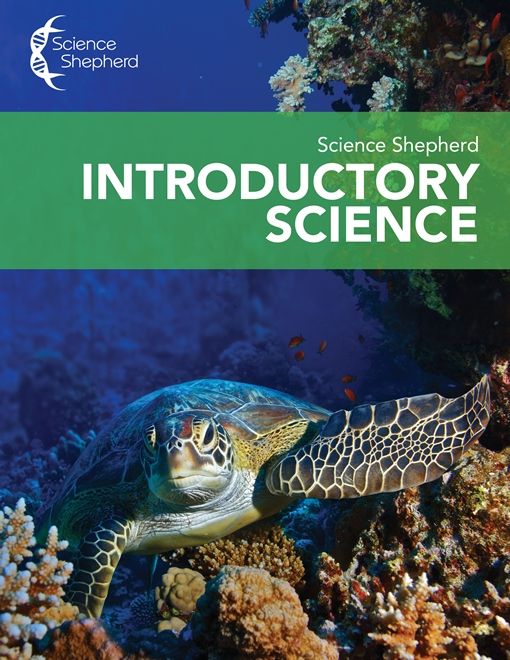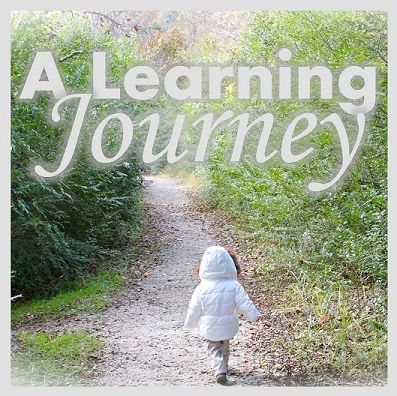We also received a consumable 383-page Level B Workbook which is suitable for children ages 9 to 11. However, younger children ages 6-8 could also benefit from using this workbook level. My understanding is that this level contains a little more content and utilizes a smaller font than Level A. There were only two daily lessons in Week 35 covering Magnets instead of five. I would have preferred that there was planned content for the entire last week.
The accompanying workbook video activity usually began with an essential question or spark to pique the child's interest. Video activity pages were on a separate page following the lesson. Necessary supplies were listed in bold print under the video activity. Numbered instructions or activity directions followed the supply list.
The spiral-bound workbook begins with a 2-page Table of Contents and weekly lessons are organized across a five-day time period.
The pages were black and white containing no flashy or colorful content. Lesson comprehension questions come in a variety of formats including true/false, multiple choice, fill-in-the blanks, and written short answer observations or predictions. Alyssa was asked to circle the best answer choice for each question. Answer choices were indicated in bold print.
There is an excellent mixture of workbook activities such as word search puzzles, matching puzzles, labeling, listing, classification sorts, and categorized charts. The variety of hands-on activities and experiments adds to the completeness and versatility of the program.
I loved that the authors occasionally threw in a family focused day off for the Day 5 lesson and activity as seen during Week 26 and 33. There's a note smack in the middle of the page in all caps stating, "Free Day - Enjoy the time with your family!" This gesture emphasized the importance of spending family time together and the need to take a break from the routine.
 |
| Table of Contents |
The weekly lessons are subdivided into the three main science fields including Earth Science, Life Science, and Physical Science. However, the curriculum begins with an important two-week introductory Creation study and a one-week Science Skills and Tools lesson. Evolution is briefly discussed during the Creation study. The author explores the two topics based on evidence provided in the field, but the material covered emphasizes a more Christian perspective. He arms the student with a basic understanding of evolution to prepare them or conversations in the future. You can read more about their perspective under the Frequently Asked Questions on the website.
Referenced Bible verses in the Holy Bible or ESV translation are provided at the beginning of each weekly lesson. My daughter would often attempt to memorize and recite the Scripture verse on Fridays. The weekly verses are repeated on a daily basis which means you can improve your Bible memorization skills by using a scripture memory system. Children can easily memorize and recite each weekly Bible verse at the end of the week if desired. For example, Jonah 1:4a can be seen at the top of Week 6's Meteorology lesson covering storms, thunder, lightning, wind, tornadoes, hurricanes, and the great flood.
"But the Lord hurled a great wind upon the sea, and there was a mighty tempest on the sea . . ."
Bible verses can also be read on the screen during the video presentations. The referenced scripture is noted and a large font is utilized.
The curriculum addressed many topics, including but not limited to, creation, science skills and tools, meteorology, oceanography, natural resources, ecology, geology, astronomy, botany, life science and human beings, nutrition, health, motion, matter, energy, magnetism, and zoology. Zoology was organized into three broad categories: Underwater, land, and flying animals. Many of the topics sparked Alyssa's interest.
Answer Key
The 41-page paper booklet Answer Key (sold separately for $3) was included in our set. It provides the teacher with the answers to the problems for each of the daily lessons. Student questions are not reproduced or restated. The answers are given in numerical order or with matching pairs. The weekly lesson is titled using white text with a black filled text box. For example, Week 7 - Earth Science: Geology. Each daily lesson is indicated in bold print with subtitles such as Day 1- Introduction, Day 2 - The Earth's Layers, Day 3 - Rocks, Day 4 - Soil, and Day 5 - Landscapes. The answers are listed by in a black-filled text box weeks and days. You can see another example in the photo below. This booklet contains only answers. No teaching tips or scripts are given.
How We Used Introductory Science
I used Introductory Science with my daughter, Alyssa, who is 8-years-old. I chose the Level B Workbook, because she works at a 3rd-5th grade level. The Level B Workbook offered a few more questions using a smaller font yet the same material was addressed.
We completed a lesson on a daily basis Monday through Friday. We used the curriculum 5 times per week for approximately 10-30 minutes a day depending on whether or not hands-on experiments or activities were added into the lesson. We completed one full lesson each week except for the first week. We received our video subscription early so we watched the videos for the first week together and then completed all of the workbook pages in one day once the book arrived in the mail. The content addressed during the first week was a review for us.
The questions were completed together at first. Alyssa read the verse aloud and I read the question. She stated the answer and I checked her work. However, I quickly realized she could work independently on the assignment which gave me more time to work on lesson plans, chores, and work. She would bring her work for me to check using the answer key provided. There were a limited number of questions to answer each day which made the lesson more manageable and the page less cluttered.
First, Alyssa watched the short video lesson. The videos were viewed in full-screen mode on our MAC OS X 10.9.5 computer. Chrome was our preferred browser. Then, she completed the corresponding comprehension questions so that I could assess her understanding and retention level. The questions reinforced her learning and were discussed to clarify misunderstandings. A separate student demonstrated video was provided for each hands-on experiment following the daily corresponding lesson. Alyssa liked that she could watch the videos over and over again if desired for review or clarification purposes. The well-organized website enabled us to navigate through and find specific lessons easily. The video lesson below invited her to make observations and predictions.
All activities and experiments followed the workbook questions. We chose to complete many of the optional hands-on Science activities and experiments included in the workbook. Any needed household items for experiments were gathered in advance so that we could complete the activities or experiments on the same day as the lesson if possible. The hands-on activities were by far her absolute favorite part of the curriculum as you will see in the photos below.
Throughout the review period, Alyssa drew beautiful creation posters, made observations during mystery bag predictions, created model magic animal creations, completed leaf rubbings, wrote a dominion list, and set-up several experiments.
 |
| Creation Posters |
 |
| Favorite Animal Creation Project Another Favorite Project! |
 |
| Mystery Bag Observations and Predictions |
Her favorite experiments were the Water Cycle Tin Can and the Colored Ice Cube Storm Experiment. The ice cube storm experiment took a slight detour so that we could discuss mixing colors in Art. One tidbit to remember for these two experiments is to make sure you freeze the water beforehand in preparation for the lesson.
 |
| Water Cycle Experiment: Air is All Around Us |
 |
| Storm Formation Experiment: Blue (Cold) Water Along the Bottom Forcing Red (Warm) to the Top |
One activity that we didn't do was the Pine Cone Bird Feeder, because this activity had been done many times in the past. She was extremely excited about making an an anemometer, however, that quickly turned into frustration. Our straws must have been too flimsy or our cups were too big. This ended up being her least favorite activity.
The built-in weekly review activity was a big hit with my daughter, because she's a huge puzzle fan. Review was provided in the form of a crossword puzzle consisting of 5 to 8 vocabulary words to complete the fill-in-the-blank clues. My daughter thought they the puzzles were extremely easy. A word bank in list format was provided for each crossword puzzle.
 |
| Week 2 Crossword |
- High-Quality Real Life Photos, Diagrams, Flowcharts, and Graphics
- Encourages Independence
- Individualized Pace
- No Science Teaching Background Required
- Extremely User-Friendly
- Short Lessons
- Video-Based Learning Paired with Worksheets
- Fantastic Science Overview
- All Learning Styles Addressed: Multi-Sensory Curriculum
- Biblical Perspective
- Age-Appropriate
Possible Vendor Suggestions
- Answer Keys Included in Package with a Sturdier Laminate Cover (Not as a Separate Purchase)
- Add Quizzes and Tests Containing True/False or Multiple Choice Formatted Questions
- Offer Perforated Three-Hole Punched Workbook Options or Stronger Bound Materials
- Experimental Lab Worksheets Emphasizing the Scientific Method
- No Expiration Date on Videos for Curriculum Purchasers (Provide Password Inside Workbook)
- Add a Resource List Including Content Songs, Related Literature, and Websites for Enrichment Purposes
- Create Additional Elementary Science Curriculum Mastery-Based Courses: Anatomy, Life Science, Earth Science, and Geology
Overall Thoughts and Results
Alyssa is definitely retaining the information from the videos. We like to think of them as short bursts or chunks of interesting information about our world. The work load is manageable and the workbook reinforces the content taught. She was engaged in the lesson and the short videos maintained her attention. We will continue using this complete video science curriculum through next year. We started Week 7, but we may slow things down to further research the Earth's Layers with related literature and a hands-on activity.
This curriculum simplified my life and homeschool planning at a time when I needed less on my to-do list. I no longer had to piece Science unit studies together. I may add on a few projects to dig deeper into specific topics next year, but they aren't necessary just a preference. There was minimal, if any, teacher preparation required. The curriculum could also be done independently depending on your child's reading level too. A variety of concepts were systematically taught and addressed giving her a well-rounded concise foundation based on a creationist viewpoint.
This curriculum simplified my life and homeschool planning at a time when I needed less on my to-do list. I no longer had to piece Science unit studies together. I may add on a few projects to dig deeper into specific topics next year, but they aren't necessary just a preference. There was minimal, if any, teacher preparation required. The curriculum could also be done independently depending on your child's reading level too. A variety of concepts were systematically taught and addressed giving her a well-rounded concise foundation based on a creationist viewpoint.
Recommendation
Yes. I would ABSOLUTELY recommend Science Shepherd's recently released Introductory Science curriculum to all home educators especially if you do NOT have a strong Science teaching background. My daughter is learning a an enormous amount and actually asks to do science first thing in the morning. She knows that it is a quick lesson and is one subject she can easily cross off her assignment list.
At first, Alyssa thought that the videos were going to be boring, because the author's voice was very dry, monotoned, and straight-to-the point. However, she grew to appreciate the conciseness of the videos. Children who learn best from computer-based or video-based learning when material is explicitly taught may find the curriculum appealing. It combines several different teaching methods or strategies including video-based learning, hands-on activities and experiments, word puzzles, drawing, and more. Auditory, visual, and kinesthetic learning styles are addressed.
At first, Alyssa thought that the videos were going to be boring, because the author's voice was very dry, monotoned, and straight-to-the point. However, she grew to appreciate the conciseness of the videos. Children who learn best from computer-based or video-based learning when material is explicitly taught may find the curriculum appealing. It combines several different teaching methods or strategies including video-based learning, hands-on activities and experiments, word puzzles, drawing, and more. Auditory, visual, and kinesthetic learning styles are addressed.
Prices
Introductory Science Curriculum $35
Workbook A (Ages 6-8) $12
Workbook B (Ages 9-11) $15
Answer Key $3.00
Monthly Video Course Extensions (1-3 months) $5 - $15
Notes:
- All prices are subject to change without notice.
- View the samples and read the reviews before choosing a workbook level.
- You WILL need one workbook for EACH student.
Social Media
Twitter @ScienceShepherd
The Schoolhouse Review Crew Blog gathers even more Science Shepherd reviews. Go check out what my colleagues have to say! Higher grade level Science curricula was also reviewed.








































No comments:
Post a Comment